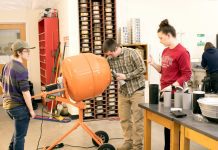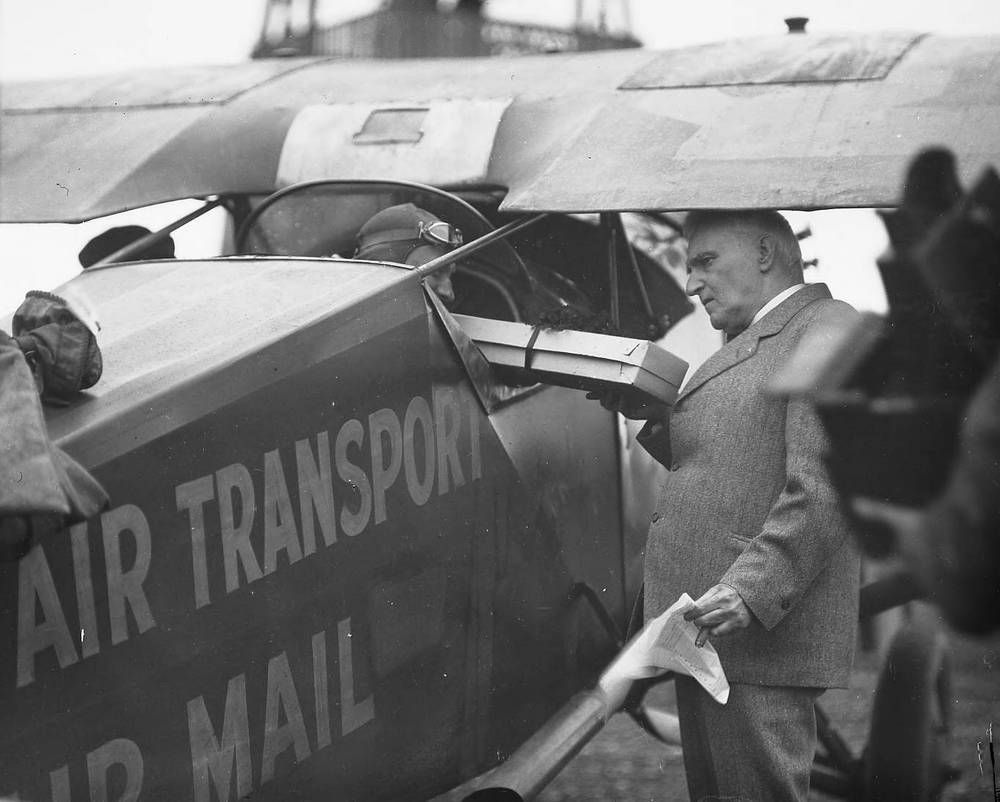The technology and capacity of airplanes skyrocketed in the years immediately following the 1903 flight by Orville and Wilbur Wright. These flying ships were seen as the future of travel that would link cities around the world with deliveries of airmail, fresh food and passengers, which would otherwise take days or weeks by train to reach their final destinations. This was several generations before the interstate highway system after all. Ground travel across the nation either meant trains or traveling along a daisy chain of local roads that linked cities and towns.
As with any new technology, small business owners saw opportunities to make money from people in search of faster travel options. Airports and backwater airfields mushroomed around the nation.
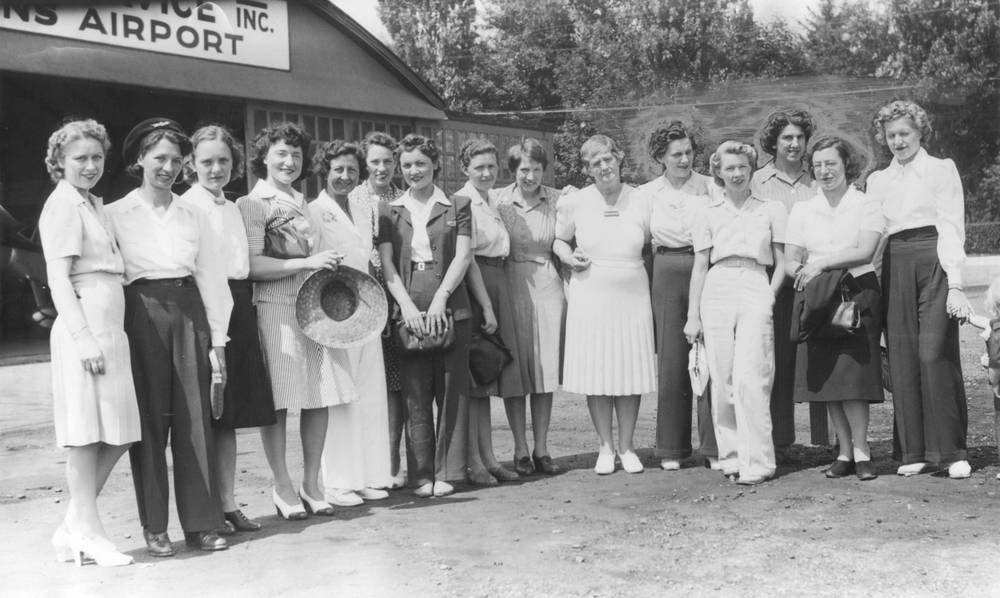
Mueller-Harkins Airport
One of the first airports in Pierce County was the Mueller-Harkins airport that took over the central field of the former Tacoma Speedway in what is now Lakewood. The speedway had gone bankrupt in 1922, so Rudy Mueller and Leo Harkins bought the property and started the area’s first air service. The first airmail would arrive in April of 1926, with regular service starting on Sept. 7, 1927. Press estimates at the time stated that some 2,500 people stood around the field for two hours to cheer the Pacific Air Transport Co. plane’s arrival that day.
The field would then make national headlines when Harold Bromley set out to fly his “City of Tacoma” Lockheed airplane across the Pacific Ocean and land in Tokyo in 1929. He, and his plane for that matter, would barely leave the ground, however. He crashed at the end of the runway.
The field would also house the Tacoma Flying Service that would go on to have a federal contract to train civilian pilots as the country inched toward World War II. The airfield would serve as the Tacoma Municipal airstrip before the federal government assumed operations in 1944 as a naval depot. It would return to civilian use after the war, but its days were ending.
Clover Park Technical College would take over the site in the 1970s, but the field’s close proximity to the Air Force’s operations at McChord Field made flights in and out of the growing suburban airport problematic. CPTC finally moved its aeronautical repair program to East Pierce County’s Thun Field in 2001. The Mueller-Harkins hangar remains in use, however, since it houses the technical college’s carpentry program. Not much else of the land’s aeronautical past remains.

South Tacoma Airport
Such is also the case of the South Tacoma Airport, which has all but disappeared from memory let alone the landscape that was once its home. It operated just north of 56th and west of South Tacoma Way, in what is now an industrial park. The 3,500-foot field was home to the Tacoma Aero Club that operated there from 1936 to 1975 and included a separate 2,000-foot trench for seaplane landings. The field provided fueling, repairing, restoring and airplane storing facilities. Urban developments in the area and the rising cost of land ended operations at the field, which has since been replaced by warehouses and industrial businesses. The only large clue that planes once buzzed over the skies of South Tacoma is the fact that the Airport Tavern still operates, decades after the field closed. Patrons still trickle in a few times a week either asking about the missing airport or reminiscing about their piloting days gone by.
Dan Rankin owns the landmark bar on South Tacoma Way these days and never thought about changing the bar’s name when he bought it four years ago.
“There is just too much history there,” He said. “We wanted to pick up that torch and run with it. It’s kind of cool. People love that sort of stuff.”
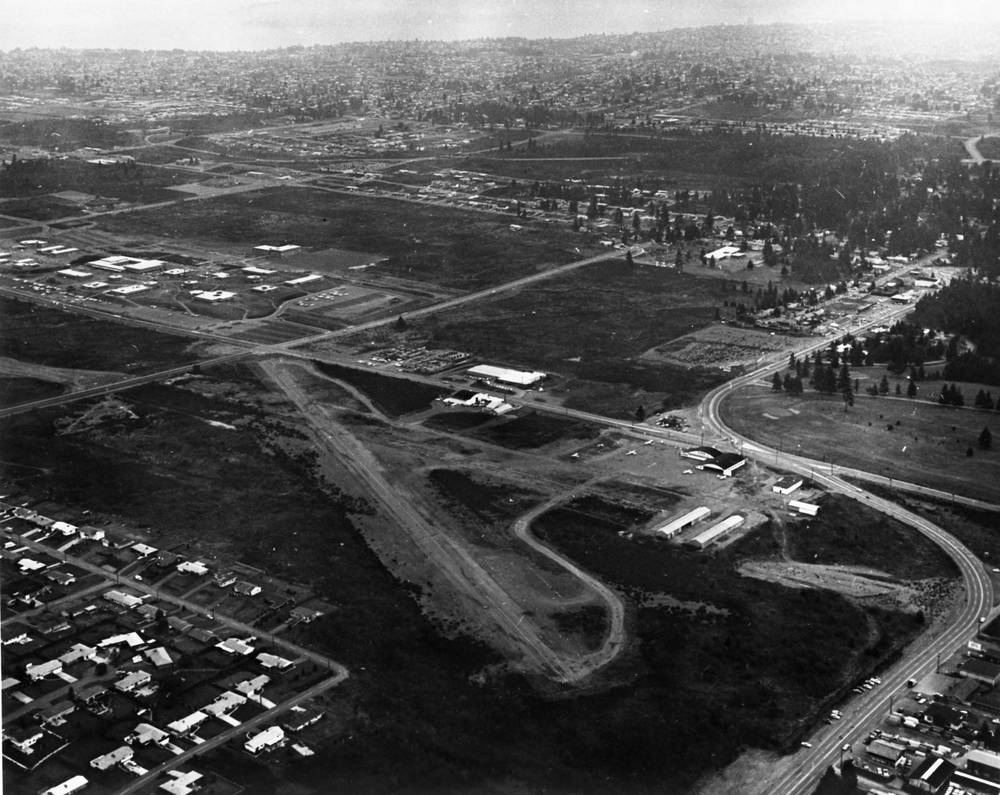
Tacoma Airport
That area of Tacoma must have swarmed with planes at one point, since there was another airfield just over the rise two miles away, at the border between Fircrest, University Place and Tacoma. The Tacoma Airport operated just west of the Fircrest Golf Course. The site was bounded by 19th Street on the north, 27th Street on the south, Mildred Street on the east, and Cascade Place West on the west. The general aviation field had two runways and was built shortly after World War II and operated by Bud Oswald, who did business as Oswald Flying Service from wood-framed hangars. A fire ripped through three of the hangars in 1969 and the field would never recover. It closed in 1973. The site was rapidly redeveloped for commercial and retail operations.
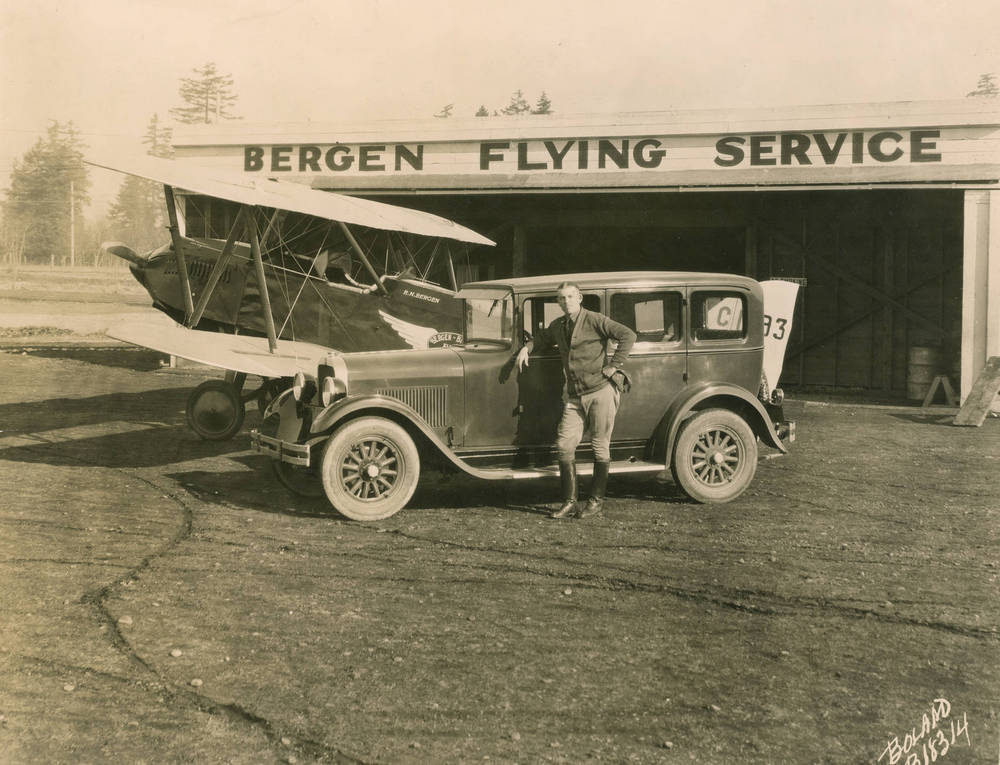
Other Airports Past and Present
The Tacoma Narrows Aiport opened in Gig Harbor in 1963 and held its first air show three years later. The City of Tacoma operated the field until 2008, when Pierce County bought it through a partnership with the Peninsula Metropolitan Park District. The airport is the county’s primary business jet facility with 94,000 takeoffs and landings each year. Pierce County also owns and operates the single-runway Thun Field outside of Puyallup that averages about 274 takeoffs or landings each day. The field is named after John Thun who bought the land in 1949 with the idea of running a Christmas tree farm before shifting gears and becoming an airport operator. Most of the 253 aircraft at the airport today are single-engine aircraft used for personal enjoyment and instructional programs.
Not far away was Spanaway Air Strip, which opened in the late 1940s. It operated just east of McChord Field until it officially closed in 2018, falling victim to rising property costs, residential developments nearby and increased regulations. It should be noted that a plane from the field made the record books for a time, when Lt. John Hodgkin successfully took off from the field and landed a ski-equipped plane on Mount Rainier in 1951.
Another lost airfield was located in Maple Valley. It served single-engine pilots and airborne vacationers through Gaffney’s Lake Wilderness Resort Airfield in the 1950s and early 1960s before closing. The land is now the Lake Wilderness Arboretum.








